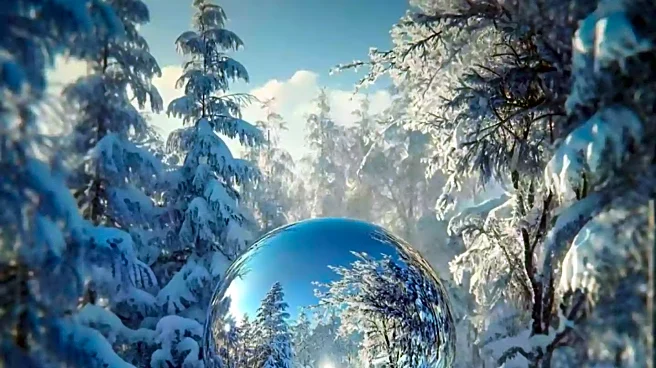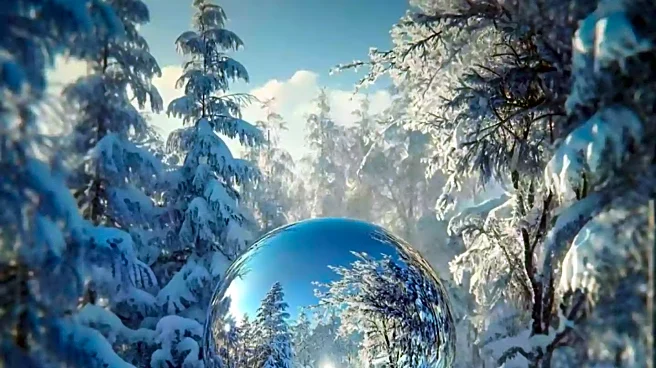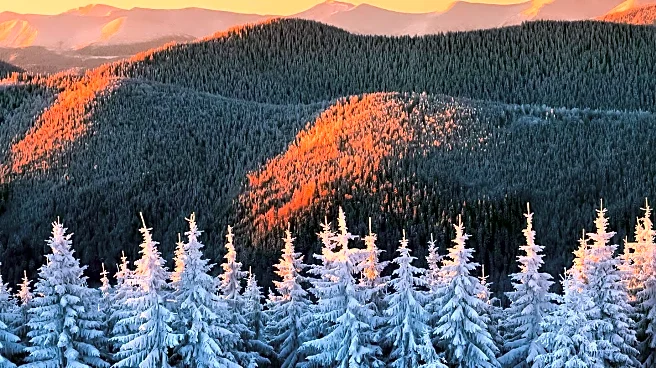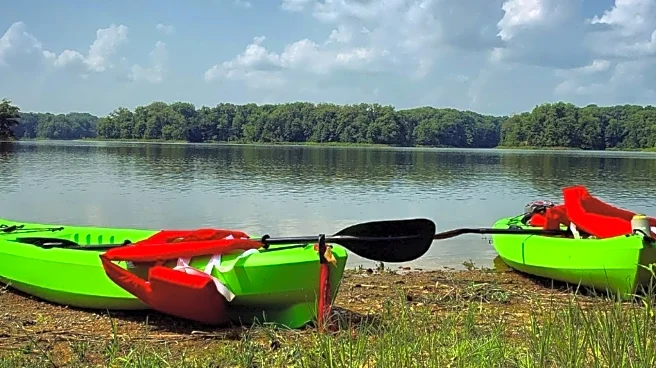What's Happening?
In Asheville, North Carolina, traditional folklore continues to provide insights into predicting winter weather. Observations of nature, such as the behavior of insects and animals, have long been used to forecast the severity of the upcoming winter. For instance, high nests built by hornets, wasps, and bees are believed to indicate heavy snowfall, while tall ant hills suggest a long, harsh winter. Other signs include cicadas singing, which predicts frost in six weeks, and crickets chirping early, signaling an early winter. Squirrels collecting nuts frantically or building high nests are also seen as indicators of a severe winter. Additionally, the woolly bear caterpillar's color bands are thought to predict winter conditions, with more black indicating a snowy season. These traditions, while not scientifically proven, are cherished and passed down through generations, often aligning with scientific observations such as La Niña patterns.
Why It's Important?
These folklore traditions highlight the cultural significance of nature-based weather predictions in rural communities. They offer a unique perspective on how people historically relied on environmental cues for survival and planning. While modern meteorology provides more accurate forecasts, these traditions reflect a deep connection to the land and its cycles. Understanding these practices can enrich cultural heritage and offer alternative insights into climate patterns. For communities that value these traditions, they serve as a reminder of the wisdom embedded in observing nature, fostering a sense of continuity and respect for the environment.
What's Next?
As winter approaches, communities may continue to observe these natural signs alongside scientific forecasts to prepare for the season. Festivals celebrating these traditions, such as woolly worm races, will likely persist, reinforcing community bonds and cultural heritage. Additionally, there may be increased interest in integrating traditional knowledge with scientific data to enhance weather prediction models. This could lead to collaborative efforts between meteorologists and local communities to explore the validity and utility of folklore-based predictions.
Beyond the Headlines
The enduring popularity of these folklore traditions raises questions about the intersection of science and culture. It highlights the potential for integrating traditional ecological knowledge with modern scientific approaches to enrich understanding of climate phenomena. Furthermore, these practices underscore the importance of preserving cultural heritage and the wisdom of indigenous and rural communities in the face of technological advancements.














